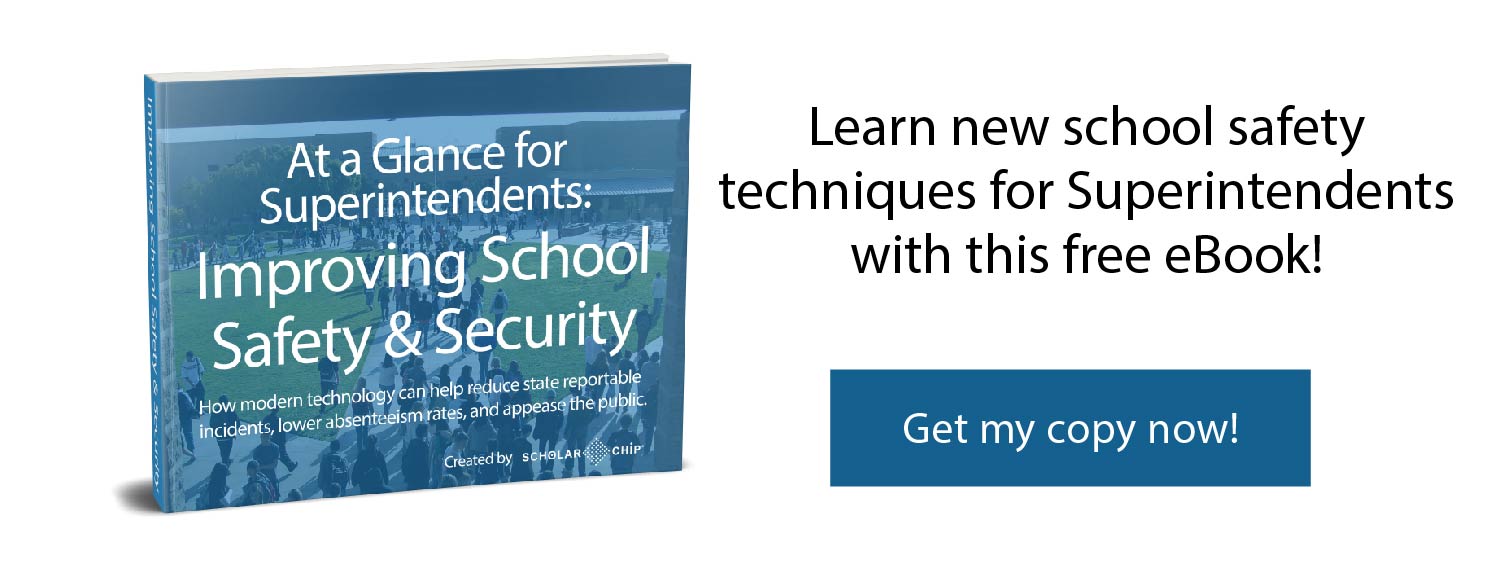There is a startling lack of education around data among today’s American educators. 94% of schools reported monitoring school safety and security by locking and watching doors in the school seasons between 2015-16 and now. The number of school violence related deaths are increasing, however small the margin may be. In the last 25 years, we have seen a gradual rise from 47 deaths to 48 estimated deaths.
The ScholarChip creed
ScholarChip’s mission is to decrease the number of school violence-related deaths. But rather than stopping there, ScholarChip is rising to the times and imploring schools to re-evaluate the way they think about school safety. But safety doesn’t always equate to an engaged and positive school climate. Here we address data and how it provides a more complete picture on school climate as it relates to safety and security, and what ScholarChip is doing to help schools manage it. Schools in America are believed to be getting safer statistically.
Collect various data types:
For your school safety and security research to be complete, you will need to collect several varieties of data. These should be planned with purpose. If you were to implement a visitor management system, data will be gathered through the swipe of a driver’s license. Your school’s processes and demographics make a good foundation for data points. Then, your student learning environment and their perceptions make for additional factors. Combining these as factors of external and internal potential security risks makes the most comprehensive overview for your school safety and security plan.
What kind of data?
We’ve determined that you need various kinds of data. What kind of data makes the list? For that question, we’ve consulted last year’s Violence Prevention in Schools report. This report was gathered by the FBI. A brief example of some data points that can be made are registered sex offenders and background history of the visitor. These data points are very clear in the aid to secure your campus.
Parameter data
As a result, the various kinds of data accumulated into a report will help in the aid to catch trends, and other forms of information that are important to securing your school campus. Hard data is a very important aspect of being able to visualize patterns and see where improvements can be made.
School Resource Officer legwork reports
Whenever applicable, school safety and security resources should come from an officer base. These officers will act as the field agents of the security tech you employ. Their presence on campus will update surveillance watch patterns, giving the school a real-time feed of interactions to assess. These professionals can contribute to school improvement cycling data from their threat assessment training resources. Always leave contingencies in the school’s security plan for cooperating with law enforcement’s greater range of expertise.
Legal issues history
Whenever possible, schools should keep continuing to pursue a safe campus and updated records of the legalese they’ve encountered on security measures. This supports a firm grasp of a school’s criminal incident report history for new faculty members. It also provides a chance to review cases that were problematic. From this observation process, a grading rubric can be developed. With a grading rubric, faculty can pinpoint the margin of error from the past. This will prevent tangling security measures in the same red tape as former incidents encountered.
Political activism entanglement prevention
Some security measures such as establishing police influence in schools have met with a negative social response. Political activists aren’t the only ones concerned with police in schools, for fear of minority treatment and other issues. Parents, teachers, and staff are concerned as well. To avoid non-productive debate cycles, gathering data that compares the statistical margin for political activism response to natural due process is useful. Particularly where the data points out the pattern for a negative reaction from the activist public.
Whenever possible, the school can keep its security policy hearings confidential, with only faculty, legislators, and parent/guardians privy to some planning processes. This evades the issue of political irritation.
Evading political disruptions amplifies security. There is a certain degree of anonymity which must be upheld in security measures.
Analyze data patterns
The various data must be filtered through their own lenses. Each various type must be examined until clear patterns are determined. When these patterns are identified an improvement plan can begin to develop. Once a plan is somewhat ghost-mapped, a strategy can be created to accommodate the plan.
Forming hypotheses
Determining patterns is only the first step in generating strategies. The bridge between data and strategy is a sound hypothesis. The question to as now is “why.” Why have these patterns formed the way they are observed from the data? Determining the reason behind each individual observation set forms a stronger basis for theoretical planning.
Implementing new tech based on data stats
A holistic approach to school safety and security can start with automating and clearing visitors at the door. While you’re at it, the same station can capture student late arrivals and early dismissals, making for a more efficient front office while securing the building. In addition to visitor management, schools can issue Smart ID cards to students and staff (can integrate with most Student Information Systems and HR software). By issuing smart ID cards, schools can move towards other card-based services like attendance, staff time clock, cafeteria point of sale, door access control, and more. It provides the toolbox you will use for the above described due process.
This data is robust and available in real time. At all hours, in all student environments, you know who your visitors are and where they are on campus. This optimizes a safer school environment and doubles as a top performance driver. The accurate representation of staff and students act as an on-site accountability record in that respect.
Moving forward
In time, data analysis will be integrated into all walks of life. That is why preparing for the future is so important for school campuses. That is also why an early integration is entirely necessary. While school funding and police availability may fail, and ID management system is a one-time installation that will continue to produce evergreen results despite the potential deficit of human assets.
ScholarChip is an all-in-one, cost-efficient solution to help reduce school threats and address the important issues surrounding school safety. Data from students, faculty and stakeholder are leveraged to manage school access, attendance, and behavior management through the platform tools to increase safety and promote the campus climate schools are looking for.
If you would like to learn more about how your school can benefit from implementing ScholarChip’s platform, feel free to request a 1-on-1 safety and security strategy session today!


